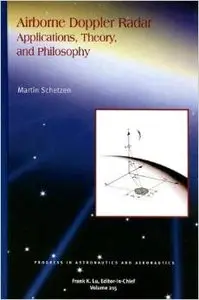Airborne Doppler Radar by M. Schetzen
English | June 1, 2006 | ISBN: 1563478285 | 185 Pages | PDF | 3.5 MB
English | June 1, 2006 | ISBN: 1563478285 | 185 Pages | PDF | 3.5 MB
The author’s extensive work in Doppler radar theory – specifically his development of an exact theory for the spectrum of an airborne Doppler radar – is thoroughly presented in this important book. Much of the material presented has not previously appeared in print and anyone involved in Doppler theory and applications, airborne Doppler radar, or aircraft stabilization and navigation will find this book invaluable.
Starting with his recognized accomplishments gained while a member of the Apollo 11 lunar landing mission team where he was tasked with determining if radar performance over the Moon might differ from that over the Earth, Schetzen theorized that in guidance and control applications, the actual shape of the Doppler spectrum was not necessary; that only its center frequency and bandwidth were required. Following Apollo, he continued to expand his theory in order to make it more useful – developing equations from which the center frequency and bandwidth could be obtained without first determining the actual Doppler spectrum. As a result of these equations, the author derived his Airborne Doppler Uncertainty Principle which states there is a lower limit of the product of position uncertainty and velocity uncertainty.
The book begins with a basic discussion of the Doppler effect and its various applications and how Doppler radar can be used for the stabilization and navigation of aircraft. A quasi-static approximation of the Doppler spectrum is presented along with illustrations and discussion to help the reader gain an intuitive understanding of the approximation and its limitations. A summary of the mathematical concepts required for development of an exact theory is then presented using the case of a narrow beam antenna. This is followed by the development of the exact theory for the general case which is graphically illustrated and compared with the quasi-static approximation. General conditions for which the quasi! -static approximation error would be excessive – specifically as applied to laser Doppler radars and low-flying aircraft – are presented.
Software, in the form of an executable Matlab™ program which can be used to determine the Doppler spectrum parameters for any antenna pattern and any terrain backscattering, is included.
The text develops concepts and theories in a manner that can be readily followed and is supported by graphic illustrations that assist the reader in understanding the theoretical predictions. Where appropriate, examples are presented to illustrate the theory. Final results are summarized for readers who choose not to follow the development of the theory itself.



